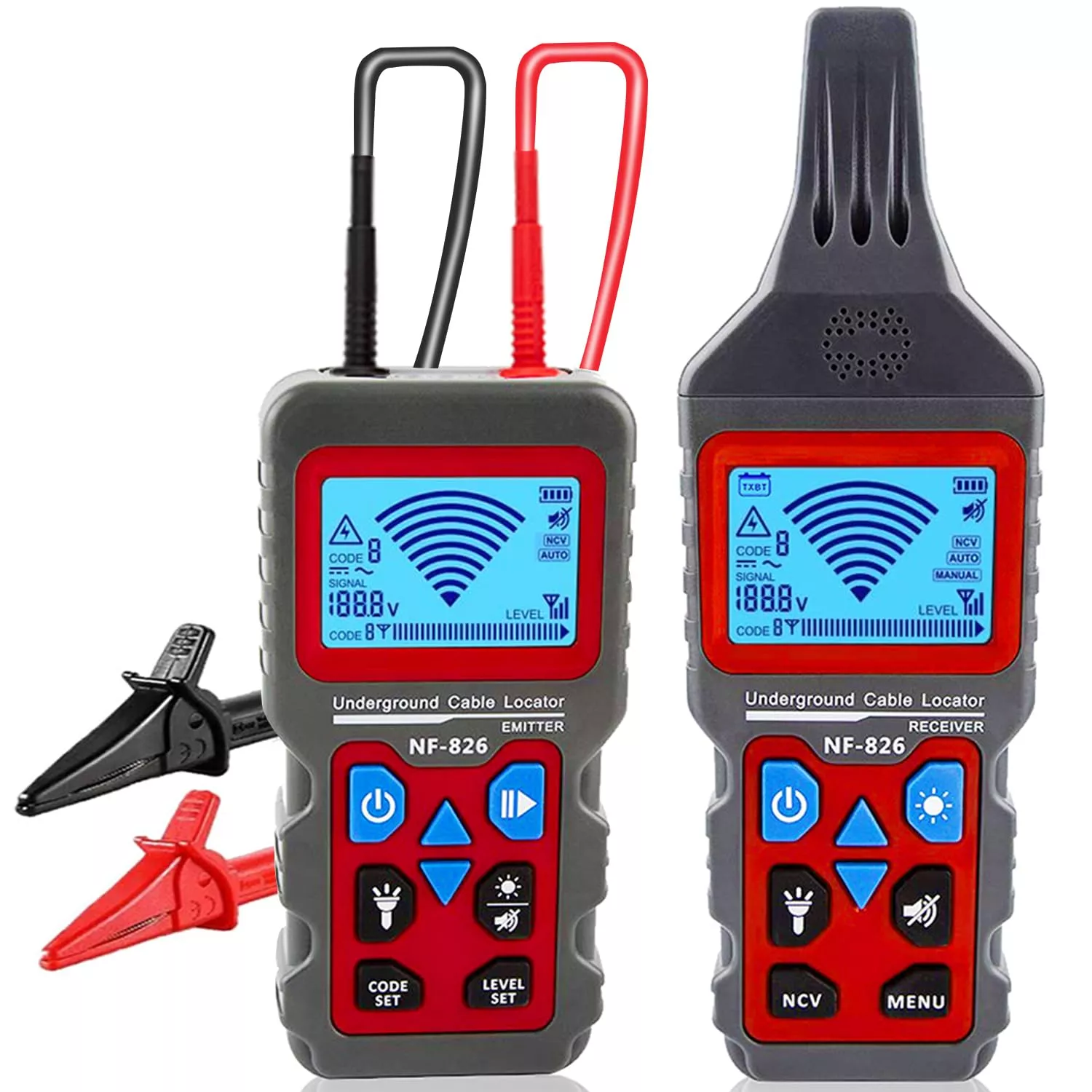
If you’re looking for an efficient tool to identify underground cables and wiring issues, the NOYAFA NF-826 Underground Cable Locator might be the answer. This device promises to provide accurate detection of both open and short circuits, ensuring that maintenance becomes a hassle-free task. Let’s dive deeper into its features and benefits.
Product Features
| Feature | Description |
|---|---|
| Type | Underground Cable Locator, Wire Tracking Detector |
| Detection Range | Up to 3-4 feet deep and 2000 feet in length |
| Power Supply | 3.7V 1400mAh Lithium battery |
| Voltage Measurement | AC: 12-400V; DC: 12-400V |
| Transmitter Signal Frequency | 125KHz |
| Battery Indicator | Low battery warning on LCD |
| Mute Function | Yes |
| Flashlight Feature | Integrated flashlight for dark environments |
| Automatic Shutdown | Yes, after 10 minutes of inactivity |
| Display | LCD with backlight |
Product Overview
| Pros | Cons |
|---|---|
| Highly accurate in detecting cables and wires | Instructions may be confusing for some users |
| Multiple functionality including voltage measurement | Not suitable for multistrand wires |
| Compact, durable design for portability | Some reviews mention sensitivity issues |
Understanding How the NOYAFA NF-826 Works
Using the NOYAFA NF-826 is an enlightening experience, especially for those of us involved in home improvement or maintenance tasks. I found it particularly handy when locating underground wiring, which can often be a daunting task. Users generally begin by turning on the device and adjusting the sensitivity settings. This feature is so crucial since different scenarios require varied sensitivity levels. For instance, when tracing a specific wire, increasing the sensitivity can result in a more accurate reading.
In practical applications, many users have shared that the NF-826 excels in home wiring projects. I’ve used it to avoid cutting through important wires while digging in my backyard for landscaping. The locator’s ability to detect short circuits is equally impressive; I’ve seen technicians appreciate how quickly they can diagnose issues in power cables. They often comment on how the built-in voltmeter simplifies the process by providing real-time readings.
However, there is a slight learning curve to master its various features. Some users initially struggled with frequency scanning but once they got the hang of it, they noted how beneficial it became in differentiating between signals. Overall, the satisfaction with the NOYAFA NF-826 is palpable, but like any tool, it’s best utilized with a bit of practice.
Real-world Applications and User Experience
The NOYAFA NF-826 Underground Cable Locator shines in various real-world applications, demonstrating its effectiveness in home and professional settings. As a user, I found that tackling underground wiring in my home became significantly easier. For instance, when I needed to install a new lighting fixture in the backyard, the NF-826 allowed me to map out existing cables quickly, ensuring I didn’t accidentally hit any lines while digging.
Moreover, maintenance professionals often share how the NF-826 helps with power cable upkeep. Simply put, the locator identifies buried cables efficiently, saving time and reducing the risk of utility damage. One contractor noted, “In my line of work, every second counts. The NOYAFA NF-826 has streamlined my process and makes my job much simpler.”
However, some users express challenges, particularly when first using the device. The learning curve can be steep; acclimating to the sensitivity settings and frequency scanning took me a few tries to master. As another user mentioned, “It took some practice to understand the readings. But once I got the hang of it, I was amazed at its accuracy.”
Overall, hands-on experiences suggest the NOYAFA NF-826 significantly enhances underground wire tracking, provided users are willing to invest time into learning its functionalities.
Conclusions
In conclusion, the NOYAFA NF-826 Underground Cable Locator is a versatile and efficient tool for anyone dealing with underground wiring issues. Its features make it a significant asset for both professionals and DIY enthusiasts. With the right understanding of its operation, it can streamline maintenance tasks effectively.